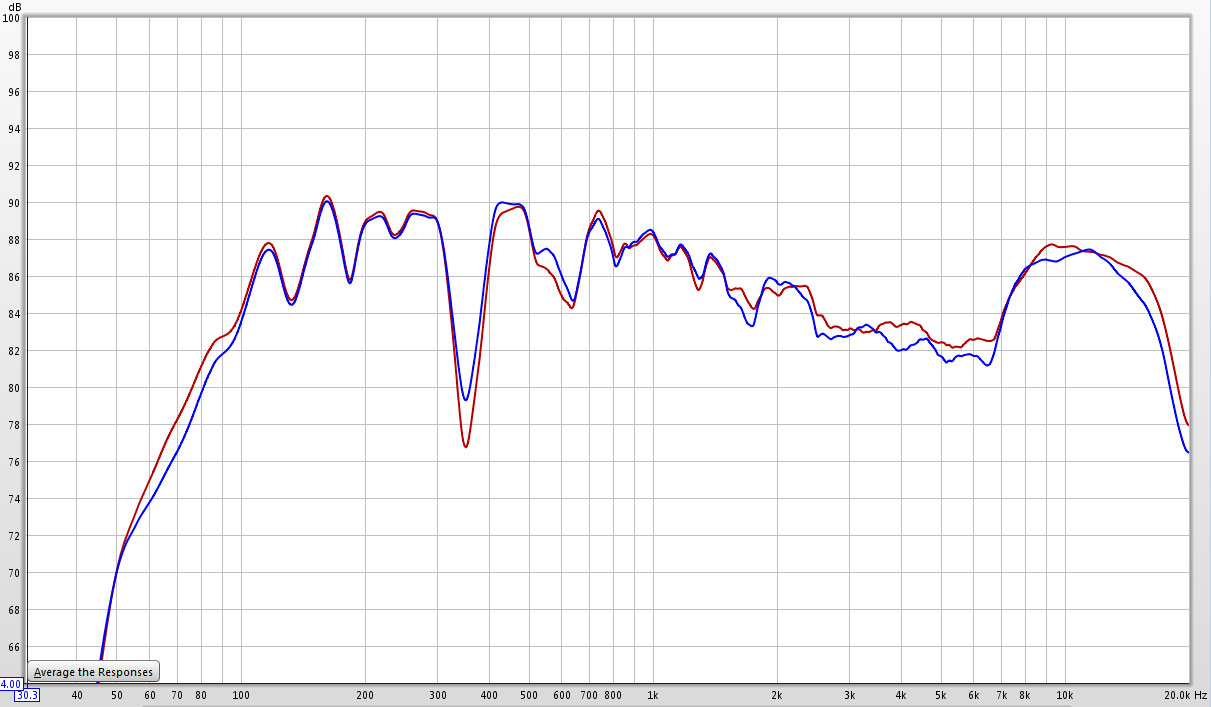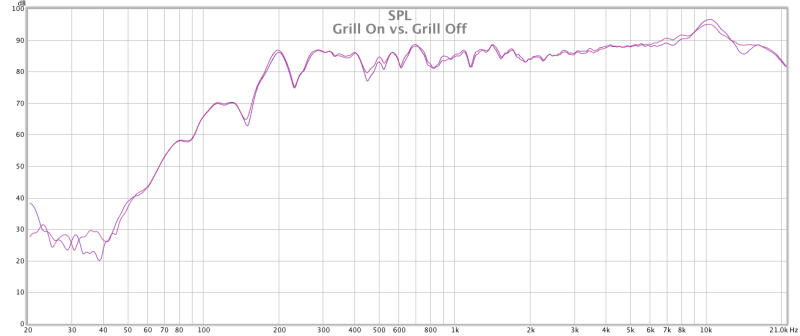I am well aware of how sound works and what a soundwave is. What i am taking about is that you have different pressures over the cone as long as you don't have exactly the same crosssection over the whole cone..
I am well aware of how sound works and what a soundwave is. What i am taking about is that you have different pressures over the cone as long as you don't have exactly the same crosssection over the whole cone..
Your first statement was in reference to my "pinch" sim being inaccurate. I quote: "accurate simulations gets accurate measurements" (a statement which is factually incorrect, btw, as to get accurate measurements does not rely in any form or fashion on simulation - instead it relies on the use of accurate measuring equipment and proper measuring technique). I responded that, at the wavelengths being considered, the simulation method is good enough for bass horn use.
If you're now talking about pressure differences across the cone itself (something that Hornresp does not sim, AFAIK), then there is going to be some variation yes, depending on the cross-section of the horn at that point. As to whether or not that variation actually makes a difference, that's another matter. I haven't seen any studies or measurements to confirm whether or not it makes a difference, and there are plenty of TH builds that seem to work fine without trying to make pressure across the cone constant by adjusting the cross-section area of the horn in that location.
I think you missunderstood me. What i was talking about was that the pressure distribution over the cone will not be equal and what i meant with your quote was that accurate sims equals accurate bulids, and you have done just that.. i was not saying that your sim was inaccurate, merely that the metod is not that good for pressure equalisation.. i do not speak english as a first language so some words might be chosen badly.
@Rune Stone where are you from? SE / DK?
I understand what you mean, I've been thinking about the same when playing with this!
Look at the WAE simulation inputs for tham12, they're very good, also note the small "expansion" at S2.
I assume this expansion is to take cone volume (AND CUTOUT -Don't forget that) into account, will it sim much differently using "Vtc" like Brian Steele suggests?
Hey we tested this with ears & microphone in a single fold 12" tapped kick horn
It sounded much better & more tight!
It measured worse!
We have an extremely high sensivity at the "third bump" from approx 120-240hz, sim says the same.
I mean a REALLY high sensivity, I was thinking about playing around with using this band more, but subwoofers would get bigger than big!
I understand what you mean, I've been thinking about the same when playing with this!
Look at the WAE simulation inputs for tham12, they're very good, also note the small "expansion" at S2.
I assume this expansion is to take cone volume (AND CUTOUT -Don't forget that) into account, will it sim much differently using "Vtc" like Brian Steele suggests?
Ignoring the back and forth banter for a moment (though I like differences in thinking and standing up for once convictions, if respectfully so).
Has anyone tried this in IRL on any of the THAM series designs? or other designs and measured any difference in response before/after?
It seems promising from a theoretical point of view, and as for the compression increase it might be worth it, in the case of the THAM designs I do not think it would pose any grater risk since they all have plenty of room cone side.
I would have done this myself had I not presently been an apartment dweller, it's been up a couple of times in various forms and should to my mind be taken seriously, the cone compensation that is, not my current state of living 🙂
Thanks for posting this (also in the THAM15 thread).
Hey we tested this with ears & microphone in a single fold 12" tapped kick horn
It sounded much better & more tight!
It measured worse!
We have an extremely high sensivity at the "third bump" from approx 120-240hz, sim says the same.
I mean a REALLY high sensivity, I was thinking about playing around with using this band more, but subwoofers would get bigger than big!
I've been waiting for this thread to pop back up as I couldn't remember which thread it was where we were discussing grills.
Anyway, I stumbled upon this post awhile ago which indicates I may have been wrong about the grill effect. His link doesn't show exactly what type of grill it was or how much percentage was open but I will concede that this is enough proof to say I was wrong to say the effect would be dramatic.
http://www.diyaudio.com/forums/subwoofers/190635-th-18-flat-35hz-xoc1s-design-211.html#post4445173
In the past the examples I've seen had a much larger effect, although some or all of it might have been measurement errors or artifacts. Stuff like this -




And many more. And all of these were just cloth grills which you would expect to have not much influence at all below 100 hz.
I don't want to rehash anything else that was discussed here, just wanted to say I found proof that indicates that metal grills have little effect at low frequencies.
Anyway, I stumbled upon this post awhile ago which indicates I may have been wrong about the grill effect. His link doesn't show exactly what type of grill it was or how much percentage was open but I will concede that this is enough proof to say I was wrong to say the effect would be dramatic.
http://www.diyaudio.com/forums/subwoofers/190635-th-18-flat-35hz-xoc1s-design-211.html#post4445173
In the past the examples I've seen had a much larger effect, although some or all of it might have been measurement errors or artifacts. Stuff like this -



And many more. And all of these were just cloth grills which you would expect to have not much influence at all below 100 hz.
I don't want to rehash anything else that was discussed here, just wanted to say I found proof that indicates that metal grills have little effect at low frequencies.
In the past the examples I've seen had a much larger effect, although some or all of it might have been measurement errors or artifacts.
Some of those graphs definitely look a bit odd. Like the one for the jBL Loft speakers showing a 10dB increase at 40Hz? WTF?
I'd put it down to measurement conditions (the jbl one seems to have been done @1M, which is bound to introduce artifacts at bass frequencies if done in-room (unless it's a very large room, LOL).
For in-room testing for response changes at bass frequencies, I measure much closer to the DUT and use a high test level to near the peak capabilities of my input device (to reduce the impact of background noise). Seems to work pretty well, though it does annoy my family at times 🙂.
Yes, clearly everything below 50 hz on that one measurement is garbage. Maybe somebody dropped book or something and was too lazy to measure again because they were only interested in the tweeter range? It can't be a room artifact or it would be in both measurements. Pics 1 and 3 look competent enough, although that doesn't mean anything and differences could come down to errors or artifacts. But I've seen quite a few of these comparisons and never seen a match like the one I linked to. But it only takes one known good measurement to prove a point. I can't guarantee it's a known good measurement and I have no idea what kind of grill he used but it is enough for me to admit I might have been wrong.
Last edited:
Yes, clearly everything below 50 hz on that one measurement is garbage. Maybe somebody dropped book or something and was too lazy to measure again because they were only interested in the tweeter range? It can't be a room artifact or it would be in both measurements. Pics 1 and 3 look competent enough, although that doesn't mean anything and differences could come down to errors or artifacts. But I've seen quite a few of these comparisons and never seen a match like the one I linked to. But it only takes one known good measurement to prove a point. I can't guarantee it's a known good measurement and I have no idea what kind of grill he used but it is enough for me to admit I might have been wrong.
The one way I can think of the grill affecting the response is when it serves to properly brace the mouth of the horn, reducing the tendency of the sides of the mouth to flex. In a properly-braced horn, the impact will be very minor, but if it's not braced properly in the first place...
If I was measuring the impact of a grill, I'd be piling sandbags or something else heavy on top the horn to eliminate any flexing (or lack thereof) from impacting the measurements. But that's just me...
@Rune Stone where are you from? SE / DK?
I understand what you mean, I've been thinking about the same when playing with this!
Look at the WAE simulation inputs for tham12, they're very good, also note the small "expansion" at S2.
I assume this expansion is to take cone volume (AND CUTOUT -Don't forget that) into account, will it sim much differently using "Vtc" like Brian Steele suggests?
Hey we tested this with ears & microphone in a single fold 12" tapped kick horn
It sounded much better & more tight!
It measured worse!
We have an extremely high sensivity at the "third bump" from approx 120-240hz, sim says the same.
I mean a REALLY high sensivity, I was thinking about playing around with using this band more, but subwoofers would get bigger than big!
I live in Sweden.
As long as the crosssection in front of the driver is constant then vtc should be correct.
Just a guy: have you tried to simulate mass loaded horns and stuff? Then you will see how much the grill affects it
Yes I'm aware of the effect of mass loading and I thought a 50 percent closed grill would have some type of mass loading effect. But the link I provided shows basically no effect at all. It's the first measurement I've seen that shows no effect but this measurement does exist so it's enough in itself to admit I might have been wrong about how much effect a grill has. Note that it's unclear what type of grill was actually used except that it was metal as per the provided link in that post that just links to an order sheet, there's no picture.
- Status
- Not open for further replies.
- Home
- Loudspeakers
- Subwoofers
- "cone compensation" - a test case